Resilience: What's Your Favourite Salad Greens To Grow?

Hello, my resilient friends. I'm late this year...even for Canada, with organizing our seed plantings. Our highly efficient seed organizing system - ahem, the cardboard box on top of a bookcase with a mess of seed packets - and I are spending the weekend together :=) So I thought we would have a bit of fun comparing notes on favourite salad greens. I'll let you know what our family is doing, and throw in some description from our seed provider and other resources. I would like to know what works for you with salad greens: seeds, planting, seedlings, anything that you find that works for you is welcome. More below.
We live in a village near Ottawa, Ontario. Our plant hardiness zone is 5a on the Canadian scale (http://www.planthardiness.gc.ca/?m=1)
American plant hardiness zones look a bit better :=) http://planthardiness.ars.usda.gov/PHZMWeb/
If you're looking for some salad green inspiration, here are two links with great info:
https://attra.ncat.org/attra-pub/viewhtml.php?id=375 ATTRA is a fantastic resource on all aspects of resilience.
http://www.motherearthnews.com/organic-gardening/heirloom-warm-weather-s... A 2013 Mother Earth News article By William Woys Weaver, who is a boffin on heirloom vegetable gardening.
We buy most of our seeds from The Cottage Gardener (http://cottagegardener.com), an online Canadian seed company that grows heirloom seeds organically. U.S. buyers would probably get a yuge loonie discount: here's hoping they ship there. Organically-grown heirloom seeds cost a bit more, but we think they're worth it. In a previous post, folks mentioned their favourite seed companies and don't be shy to do so again.
We have learned our lesson and don’t buy seeds or plants from franchise box stores anymore. They all source them from corporate farms who use nasty chemicals and raise weak, mostly hybrid plants whose seeds we can’t save because they useless. Let us know what you know about box store seeds, seedlings, and plants.
All right then, to the salad bowl.
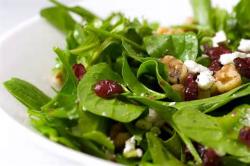
Salad greens
We’re trying to lean more on spinach-based salads (more iron, more nutrition) and get a bit more diversity into our salad greens. Here’s what we’re planting this year. The photos and descriptors are from the Cottage Gardener website.
Spinach
We've always grown traditional spinach as a veggie. We're trying to find more warm-weather varieties, whereas spinach is traditionally a cooler climate lover. The Cottage Gardener promises us these will work:
Galilee Spinach

Aka "Sbanach"
(45 days)
This is a popular Middle Eastern heirloom vegetable.
It is very heat-tolerant and can be harvested all summer long.
Tasty, triangular leaves grow on attractive curly stems and are wonderful eaten fresh in salads or cooked like spinach.
Strawberry Spinach
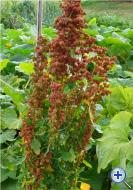
Chenopodium capitatum (30 - 50 days)
This centuries-old spinach is very popular in Europe.
Compact (18") plants are grown for their nutritious leaves.
It produces lots of strawberry (some say raspberry)-shaped red fruit that is juicy and low-acid on tall stems.
Red Malabar Spinach

Basella alba ‘rubra’ (60-70 days)
There is lots of good (and bad) infor on the web. I know zip about Malabar spinach and found this info from the Brooklyn Botanical Garden:
http://www.bbg.org/gardening/article/red-stemmed_malabar_spinach
Malabar spinach grows eight to ten feet tall and wide and produces inconspicuous white-tinged pink flowers in its leaf axils. Upon fertilization, the flowers develop into small, highly ornamental, single-seeded purple berries. The juice from the berries is so intensely purple that it puts beet juice to shame. It's used as a natural food colorant for agar (vegetable "gelatine") dishes, sweets, and pastries.
Malabar spinach excels in warm, tropical areas, where it can easily grow a foot per day. It's intolerant of any chills; thus, the only regions in the U.S. where it would be perennial are the Deep South or southern Florida. Gardeners in colder climates can grow it as an annual.
Basella alba prefers a humus-rich, sandy loam in full sun. Seeds can be sown in situ after all danger of frost has passed, or they can be started indoors eight weeks before the last frost date, hardened off outside, and transplanted one foot apart. Use any style of plant support you prefer: poles, teepees, chain-link fencing—I use a tall, recycled Eiffel Tower-esque metal étagère missing its glass shelves. Malabar spinach is amazingly insect and disease resistant, and that is saying a lot; down here in Puerto Rico, legions of caterpillars and grasshoppers can decimate an entire planting overnight, yet the spinach remains untouched!
Propagation from seed is a snap, and happily, the red-stemmed cultivar of Malabar spinach comes true from seed. Saving seed is easy too: Simply dry the entire fruit and use it for planting the following year. Stem and tip cuttings may be employed as well.The succulent leaves and stem tips are rich in vitamins A and C and are a good source of iron and calcium. They may be eaten raw in salads, boiled, steamed, stir-fried, or added to soups, stews, tofu dishes, and curries. Or you can use them as a filling for quiche, omelets, savory turnovers, and potpies. Since red-stemmed Malabar spinach can lose a lot of its red color when cooked, perhaps it is best utilized (visually speaking) in raw dishes.
Lettuce
We’re mainly interested in cut-and-come-again lettuce. This year, we have two mix seed packets.
Leaf Lettuce Mix
The mix includes:
Black Seeded Simpson
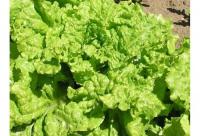
Red Salad Bowl

Tango
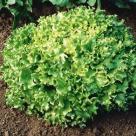
Flame & Sunset
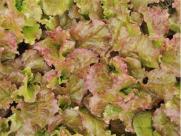
Mesclun Mix
The mix includes:
Kale

Mustard greens
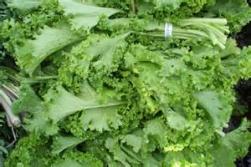
Leaf lettuce – what’s available
Arugula - see below
Chicory

Golden Purslane
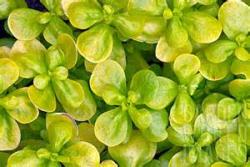
I know zip about this, but we’re going to try it.Here what The Cottage Gardener promised us:
(Portulaca oleracea) Purslane, which is mainly regarded now as a troublesome weed, was a revered European vegetable for hundreds of years. Gerard, an Elizabethan herbalist, wrote "Raw Purslane is much used in sallads (sic), with oil, salt and vinegar."
According to Mrs. Grieve's Herbal "The succulent leaves and young shoots are cooling in spring salads, the older shoots are used as a pot-herb and the thick stems of plants that have run to seed are pickled in salt and vinegar to form winter salads."
In ancient times, it was considered to have powers against magic and was strewn around beds to protect against evil spirits.
Even more helpful, it was considered "the" cure for "blastings by lightening or planets and burning of gunpowder" - so who would want to be without it?
Recently popular largely due to Dr. Oz's endorsement of it as a miracle anti-aging food, it is the highest-known plant source of Omega-3 fatty acids and has a high Vitamin E content.
The wild forms are nicely edible (I nibble as I weed) but this variety is superior in size and taste. Light green to golden -yellow succulent leaves are tender, melt-in-your-mouth sweet and enliven salads or can be cooked in stir-fries.
Arugula

I remember Obama back in his salad days (“Sigh, really, G?” :=) being castigated by the nutbars for being an arugula lover. We’re going to try it for the first time in late summer. In fact, we were highly intrigued by The Cottage Gardener’s sly promises:
45 days. A salad green used since Roman times (the Romans also used it as an aphrodisiac, but we're not promoting that. Then again...). with a slightly peppery taste, arugula is high in Vitamins A and C. Easy to grow, this is a "must have" for your salads as far as I'm concerned. Cool-weather crop.
Swiss Chard
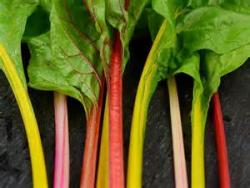
We like the young leaves of five-coloured swiss chard in salads. And the older leaves in soups and stews.
This is the one we got for this year: Five-Coloured Silverbeet
(55 - 60 days) Heirloom seed from the 1850's.
So basically, we've revamped our usual, boring lettuce salad greens. Let us know what you plant - and no worries about photos or so, just chat, eh. :=)
We doll up salads with all manner of things, as you do. I'd love to hear more about that too.
And bring on the salad dressing recipes - w00t!
Peace be with us, if we grow healthy greens for tasty salads,
gerrit


Comments
Tiny NYC apartment
As I live in an apartment with not even a balcony I don't have much space to grow anything but I manage to grow herbs and...wait for it!...tomatoes (cherry) and peppers (jalapeños and ajicito.) Ajicito is a small and very fragrant sweet pepper used in Puerto Rican cuisine that's hard to find outside of Latino neighborhoods but even when I find it there is no flavor or smell, so I decided to grow my own in my living room. Won't win any House Beautiful awards, but damn I'm proud of my plants. Would post photos if I knew how.
I have grown greens in my living room too but not enough to really make any difference in the amount of greens I needed to buy, so salad-wise I limit my efforts to sprouting and microgreens.
Mundus vult decipi, ergo decipiatur.
You are using extra lighting?
Many of us have situations with very poor plant illumination, their growth engine.
What are you using, lumens, color, etc? That would be good information for many here. Me, anyway.
Neat what has worked. I started cardinal vine and morning glory from seed. Not likely to be transplanted outside from pots. My cardinal vine bloomed (red) on 4/14/16, my son's 30th birthday.
Hey! my dear friends or soon-to-be's, JtC could use the donations to keep this site functioning for those of us who can still see the life preserver or flotsam in the water.
Morning riverlover, that's a great question. Anyone know more
about grow lights? I also need to learn more. That cardinal vine is family!
Resilience: practical action to improve things we can control.
3D+: developing language for postmodern spirituality.
Grow Lights
I've used 4' fluorescent fixtures and Grow-type bulbs.
Here's one: (probably the best for ROI)
Utilitech Linear 4-bulb Shop Light (Common: 4-ft; Actual: 12-in x 48.5-in)
Here's the entire page of fixtures:
Here's the entire Shop Light page
[one hour later...] Tried to find bulbs but the fekakta search function doesn't return the "Grow Bulbs". I know they have them in the store. GE Ecolux (F40C-50-ECO) Chroma 50 40W
Lamps need to go very close to the plants or else the lumens dissipate very quickly. This isn't a problem with fluorscents because they are naturally cool(ish) to begin with.
Improve the Resilience Resource Library by adding your links.
Vote Smart - Just the Facts - 40,000 politicians by name or zipcode
Ooh, TY AB for the grow lights info. Fekakta eh :=) I'm adopting
that word - it just cries out to live with me!
Resilience: practical action to improve things we can control.
3D+: developing language for postmodern spirituality.
Yes, grow lights when the plants are small
I have grow lights for the peppers and tomatoes and use them until the plants are tall enough to benefit from the sunlight coming through the windows. I have just three Dayspot clamp lamps which take a 60 watt Phillips or GE grow light. I don't think it would be enough for someone with a dark apartment.
The herbs do well near a window and when I remember I put them on the window sill.
I also tried the Aerogarden last summer with fantastic cherry tomato yields. Would love to be able to afford another one so I could grow other varieties of tomatoes. Tiny San Marzano ones are the ones I am lusting after.
Mundus vult decipi, ergo decipiatur.
Thanks Cachola for this advice. What's an Aerogarden? :=)
Resilience: practical action to improve things we can control.
3D+: developing language for postmodern spirituality.
Grow in water (hydroponics) system
[video:https://m.youtube.com/#/watch?v=NUJtwBYGByI]
Mundus vult decipi, ergo decipiatur.
More of a hobby thing
It's not really a cost effective arrangement but I consider it a mental health expense.
And my yields were much more than the shown here. I had to keep tying the branches because they would have so many tomatoes.
Mundus vult decipi, ergo decipiatur.
Wow Cachola, that is awesome: indoor tomatoes. And your
yields were even bigger. Not cost-effective eh? It sure looks very fancy and hi-tech, maybe that's why it costs? Thanks for this. I really must learn about hydroponics. There's never enough time in the day :=)
Resilience: practical action to improve things we can control.
3D+: developing language for postmodern spirituality.
There is lots of free info on building your own system
I like this site, although I have never tried to build my own they seem to have good info http://www.homehydrosystems.com/system_plans/free_plans.html
Mundus vult decipi, ergo decipiatur.
in a planter box in my tiny back yard
i scatter mixed mesclun seed and in 10 days it's a mess of delicious little leaves.. and I cut om them for a week and before I start cutting I spread seeds on the other half of the planter box's soil.. and when those are up and ready to cut, I pull out the now overgrown remainder of the first sowingand start that one over again. I buy a 2 buck bag of seeds which is good for the entire chilly spring, summer and early chilly fall. I can then do the same thing indoors in a tray upstairs under 3color LED grow lites for under 5 cents a week in electricity.
******************************
Muerte al fascismo. Muerte a la tiranía. colapso total de los que promueven tampoco. A la pared con el unico porciento%
I haven't been commenting
but I've enjoyed your series. I see someone else talking about 'resilience', Tom Sullivan at Digby's place.. Anyway, this is a very constructive series and is appreciated even if most times I'm too busy to stop and comment.
There is nothing which I dread so much as a division of the republic into two great parties.. This...is to be dreaded as the greatest political evil under our Constitution.--John Adams
Morning and TY, kharma, and thanks for the link :=)
Resilience: practical action to improve things we can control.
3D+: developing language for postmodern spirituality.
Morning and Ty for these tips, Cachola. I always forget sprouts
and I so wish I would remember. Thanks for the reminder - sprouts to the list!
Lovie said she wants us to grow more cherry tomatoes; I've ordered seeds of 'Cheeseman's' tomato and we'll see how it goes :=)
I will look up your Ajicito peppers; they osund real good. We want to pickle a small sweet pepper and I haven't found one yet.
You should be real proud: growing veggies in an apartment is not easy. Does anyone know where the instructions are for adding photos? If not, I'll try and make a post about that for the resilience group and add a link in our library.
It's real nice to talk with you about our plants, Cachola :=) Enjoy your day,
Resilience: practical action to improve things we can control.
3D+: developing language for postmodern spirituality.
That would be great!
Here's the link to the Wikipedia article about ajicito (ajicito means little pepper.) https://en.m.wikipedia.org/wiki/Aj%C3%AD_dulce
Mundus vult decipi, ergo decipiatur.
Thanks Cachola :=) I'll explore and try the ajicito - "little
pepper" is exactly what I need.
Resilience: practical action to improve things we can control.
3D+: developing language for postmodern spirituality.
Just added "Sprout People" to the LIbrary.
For discussion here's, here's the link.
Sprout People - 100% GMO Free Organic Seed Specialists Since 1993
I've been sprouting for years. We(Moi) don't bother / haven't had much luck growing salad greens - first too cold and all of a sudden, too hot - the greens bolt in a heartbeat. Our Reading Terminal Market (Professional Farmers') stocks numerous types of salad greens.
What are easy to grow, don't need any light, or space, and are always fresh is sprouts. You can have several varieties growing on a tiny piece of kitchen counter. Did I mention they're cheap? They're incredibly cheap. A pound of any of the small seeds will make greens for a year of more.
This Starter Sample bunch would be a good place to start.
And although they are in the business of selling things, none of the Kits are really necessary. I'll demonstrate in an upcoming How-to essay. (The short version is... any PB jar with a piece of stocking, or cheesecloth and a rubber band will do.) Their Videos, however, will take all the mystery out of growing sprouts.
Improve the Resilience Resource Library by adding your links.
Vote Smart - Just the Facts - 40,000 politicians by name or zipcode
All right, AB! That's what I need to learn about sprouts. w00t!
Resilience: practical action to improve things we can control.
3D+: developing language for postmodern spirituality.
These are the people I buy my sprouting seeds from.
I love their site. Other seeds I get from my relatives in PR and Florida.
Today I found someone on etsy that looks good for pepper and tomato seeds. https://www.etsy.com/shop/SherwoodsSeeds/items
Mundus vult decipi, ergo decipiatur.
Salad greens
Let's see .... spinach, kale, swiss chard, and several lettuces are growing now & various herbs started. When I was going slightly bonkers waiting out winter I got a kit for growing sprouts indoors (like this - http://static.eatwell101.com/wp-content/uploads/2011/11/sprouting-tray-k... ) & since then I've had 2-3 trays going at any one time, experimenting to find which seeds and mixes I like best.
~ Be kind, for everyone you meet is fighting a hard battle. ~
Ah, TY, JoyoF :=) And to Cachola for reminding us bout sprouts
Resilience: practical action to improve things we can control.
3D+: developing language for postmodern spirituality.
Not sure yet
This is the first year I will be making a concerted effort to grow food. I'm hoping that if we're picking greens from our own garden we will have less waste than usual. Also, I think we all need the higher nutritional value of freshly picked, organically-grown greens.
My hub and stepdaughter eat way too much processed and fast food. At least, I think it is a lot. They both tell me they eat far less living here than they did at home in California.
It is fun, ThursdayN :=) And one thing leads to another: we
learn growing plants by doing and then we have lots and we go, argh, now where do I put all this abundance? And it sure does taste better! Then we learn how to preserve and store veggies. And that also tastes really good: we love pickled veggies in our house, so we're going to learn how to pickle. And that will save lots of money. And we'll be eating more from our garden in the winter: we dry, freeze, and can, so now it's on to pickling :=)
Resilience: practical action to improve things we can control.
3D+: developing language for postmodern spirituality.
Aeroponics
I was really taken with a vid I saw on aeroponic gardening. The guy was in Wisconsin and had a little greenhouse in the back yard. He was harvesting every 3 weeks and said that one person could earn a living working just 2.5 hours per day. They kept the greenhouse at just 47F in the winter -- that can't be more than 10C? -- so it didn't cost a whole lot. The aeroponics uses no soil and not a whole heck of a lot of water.
You grow bare root plants in openings in 5 gal pails so the pails could be brought inside in the winter fairly easily. Very clean system.
Morning ThursdayN. That's amazing - aeroponics eh.
Resilience: practical action to improve things we can control.
3D+: developing language for postmodern spirituality.
Arugula, kale, sugar snaps,
Greenie beanies, chives, onion.
I've got a pot of chives out by the front walkway,
we harvest selectively and it keeps coming back year after year, I never think of it as greens.
That, in its essence, is fascism--ownership of government by an individual, by a group, or by any other controlling private power. -- Franklin D. Roosevelt --
Already playing out
Here in NE Alabama you can over winter greens using row covers. So ours are beginning to seed out. Lettuce is still doing well and will last another month I hope. Almost time to harvest snow peas. We've already had some 80 degree F days. Planted tomatoes this week. So our season is well underway.
Best of luck to everyone's growing efforts!
“Until justice rolls down like water and righteousness like a mighty stream.”
Morning Lookout. Wow, almost harvesting snow peas. Up here
in the great white north, our major outdoors planting weekend is the May 23rd weekend - Victoria Day. I'm so late this year; usually we have our seedlings beginning to harden off outside. Sigh. I'll get there! Alabama climate sounds wonderful for gardens. Enjoy :=)
Resilience: practical action to improve things we can control.
3D+: developing language for postmodern spirituality.
until July and August
The 100 degree summer days of July and August aren't so nice, but sweet potatoes and such like them.
“Until justice rolls down like water and righteousness like a mighty stream.”
100º, yikes. I'm no sweet potato; I'll wait for May 23 :=)
Resilience: practical action to improve things we can control.
3D+: developing language for postmodern spirituality.
For the moment, dandelions are up now (in S WI),
though you need a north slope to find ones that aren't blooming yet (like daffodils!). Wild mustard has sprouted, and asparagus is starting to come up. Nettles need to be cooked, but they're growing now, too, and make a nice spinach substitute.
Walking onions start to grow before the frost is completely out of the ground, so you can cut green onions until they start to grow the topset bulblets. In late summer you get tender greens again. They also dehydrate at home without losing flavor (as chives do).
People tend to snicker at Jerusalem artichokes, but they can still be dug now (not just in fall), and for about a month more. They can be sliced raw in salads, though I prefer them cooked. The flavor is between carrots and potatoes, I think. They are hardy and trouble-free, and if you don't feel like digging them one year, they'll happily sit there and multiply, and give you a tall screen planting and pretty sunflowers in late summer.
All of these are easy, and healthy, without the effort of planting annuals every year, though that's fun, too.
My fiddleheads (ostrich fern) are
~just~ breaking the surface... will be another week or two before they are up enough to harvest. I won't get many this year...waiting for the fern bed to get bigger before I can harvest very many in one go.
http://www.wikihow.com/Cook-Fiddleheads
Please help the Resilience Resource Library grow by adding your links.
First Nations News
Morning and TY, Sunspots :=) Jerusalem artichokes - ooh,
I'd like to know more. I hear they're healthier than (my beloved) potatoes. What do they taste like and how - and where - do you grow them?
Resilience: practical action to improve things we can control.
3D+: developing language for postmodern spirituality.
I think they taste like a combination of potatoes and carrots.
Seed catalogs and some garden stores carry them. They're knobby things, actually a perennial prairie native, a tuberous sunflower, Helianthus tuberosa, I think. You just get some of the tubers and stick them in the ground maybe 4" deep. They're drought resistant and grow about 7' tall with attractive small sunflowers. Full sun, as far as possible.
My soil is terrible, so I bought a pound of them (about six), planted them several feet apart and let them multiply for a couple of years before I started digging any. Now they've spread enough that I have to keep digging them, which is a nice problem to have with a food crop that you can neglect. In bad soil!
Big Ty, Sunspots, for the Jerusalem artichoke info. I'll go
hunting (online :=) for some tubers. What a plant for our changing climate: drought-resistant, tubers & sunflowers, perennial, soil-tolerant, taste potato-carrotty,...It sounds amazing. Enjoy your day my friend,
Resilience: practical action to improve things we can control.
3D+: developing language for postmodern spirituality.
GM, Gerrit
Jerusalem Artichokes are very tasty raw, grated and made into a slaw, with grated carrot, a dash of vinegar and a dollop of mayonnaise. (salt & pepper)
(I left you and M a message)
Improve the Resilience Resource Library by adding your links.
Vote Smart - Just the Facts - 40,000 politicians by name or zipcode
Morning AB :=) I'll copy this and try it. I love the sig line! I
will change mine to something similar. Man, you're an ideas machine! I'll go check the pm. Have a great day mate,
Resilience: practical action to improve things we can control.
3D+: developing language for postmodern spirituality.
My "salad greens" are herbs
I have a black thumb. But it's getting bettah.
My home had a rose garden in front which was tended to daily by the elderly former owner who could tend to it every day. In fact, he fell in the roses at 88 and was taken to hospital and the house was put up for sale. Such a lovely garden of roses. But..I felt more like I was sitting for them rather than caring for my own. And roses can be so hard. So after 5 years and my mother's death... I had the other neighbors who knew the former owner, come over and dig up the roses for their own yard. I kept a line of four of them. And began to take ownership of My Garden.
I have a "line" of tulips, bearded irises (50 yr old bulbs I dragged up from Cali from a friend who gave them to me- thought I killed them for a few years as they didn't bloom and now they bloom like cray!) and lots of muscari. I now have 3 kinds of muscari - one is cauliflower looking and one is called Mt. Hood as it's white on top.
Then I have a 'line" of "pollinators. Flowers that come up in waves of different stuff. Forget me nots, bachelor buttons, red clover and now there's something orange coming up.
Then there's echinacea and my dahlias. Huckleberry plants - mostly for show and the birds. Strawberry planter .. for the birds.
The front of the garden is edged with violas and pansies which are all branching out, they remind me of little kids waiting for the school bus. All gathered in little clusters.
Then a rosemary bush that likes to blush blue flowers divide the area up into a part I DO know something about.. Herbs. My herb garden is the part that is always weeded out. Thyme, rosemary, chives, garlic chives, sage, oregano (which is now popping up between the cracks of my driveway)
I also have several pitcher plants from an old boss in a boggy planter. They are alien looking and thank dog they take care of themselves. They are boggy but love Oregon.
All I know is that the dirt is called SOIL and that even if I don't know quite what I'm doing, I'm outside with my music, sometimes a sativa joint amd... I'm digging in the soil. Hearing birds and squirrels yammer at each other.
Oh and youtube is great for learning how to care for the babies. I just repotted and divided some free aloe I got years ago that simply seems to adore the slight sun spot in my kitchen window. Found out that the "babies" of aloe vera plants are called "Pups".
My patch of yard is rather tiny. who wants to maintain, care for and water a yard??? I'm not quite at "Food Not Lawns" yet but I think lawns are a waste of water and time.
I love Arugula! Spinach for superfood smoothies and arugula for salads and sandwiches, and kale for soups.
A former co-worker and friend now owns her own nursery and next week we are picking up some cherry tomatoes of hers that are amazing. Meaning... I can't kill them.
"Love One Another" ~ George Harrison
Hi DJanet :=) I hope you day is going along well. Aloe - w00t!
I grew up in South Africa and aloes grew everywhere and folks used aloe extensively in home remedies, especially as a salve. Hooray for you for getting it to grow. I must file that idea away. And you've got lots going in your garden. You may think you have a black thumbs, but I don't think so: the plants seem to differ :=) Thanks for all this good info. Cheers my friend,
Resilience: practical action to improve things we can control.
3D+: developing language for postmodern spirituality.
Here's my Purple Rain
Thank you!!
"Love One Another" ~ George Harrison
Morning DJanet :=) You've done well by Prince with this beauty.
Resilience: practical action to improve things we can control.
3D+: developing language for postmodern spirituality.
Thank you so much for saying so!!!
I've been having a bad time with my little camera phone and re-sizing of photos lately. But the Bearded looked good in this size as it's already elongated.
I'm hoping for my next birthday to get an actual camera or just a better way to edit and share photos.
And after I shared with you my little patch of garden, I went outside and was greeted by so much purple. Violas and Pansies and Irises, Oh my.
"Love One Another" ~ George Harrison
Harvesting radishes:
we (generic) always plant many, and then as the summer goes on and it gets a tad too hot they have already gotten fiery and woody. If you maintain some bolting radishes, the seed capsules look like tiny green beans, and taste like radish. A second crop! Mystify your friends or kids! Green things in salads that taste like radishes.
Hey! my dear friends or soon-to-be's, JtC could use the donations to keep this site functioning for those of us who can still see the life preserver or flotsam in the water.
The edible weed, Lamb's Quarter
Or Lamb's Quarters, depending on who's saying it.
They (it?) grew outside my bedroom window when I was a kid in dry Lubbock, TX. Haven't much thought about them until now. Never ate them raw, but they were wonderful cooked. A lot like spinach.
I love greens, but being southern, I have usually eaten them cooked. Collard and Mustard greens. When I hear the word "greens" I think of greens cooked with some type of pork. A ham hock is traditional. Although, we were so poor when I was young, Mom often flavored Lamb's Quarter with just bacon grease.
A very common meal for us would be pinto beans cooked with bacon in the crock pot, a "mess" of fried potatoes, some greens, and a batch of cornbread baked in a cast iron skillet coated with bacon grease. We were so poor, and yet, if I were on death row, that would be my last meal request.
Oh yes, TY also Deja, for the Lamb's Quarter tips. I've heard it
is good eating and thought about getting some seeds but in the end didn't. Now I'm rethinking that :=) cheers,
Resilience: practical action to improve things we can control.
3D+: developing language for postmodern spirituality.
When I lived in Louisville there was a poke weed
that grew next to a fence and escaped mowing and grew about 5' high. The fruits are poisonous, IIRC, but young leaves were used (not by me) to make poke salad (Annie). No idea whether those were fresh or boiled to grey...
I do have a Peterson Field guide, edible Wild Plants eastern/Central North America (I got it last year when I realized that might be a Good Thing to know.
There are Very Specific instructions for pokeweed: (fair use?)
"Use:Asparagus, cooked green, pickle. The young shoots--up to 6 in. 915 cm)--or just the leafy tips, are excellent boiled for 20-30 min. (until tender) in at least 2 changes of water. The peeled shoots can be boiled for 15 min. in several changes of water, and pickled in hot vinegar."
Then warning, warning, all parts of mature plant are poisonous. I suspect we need a crone (I'll check my Firefox books) to decide when it's too old. Seems like a lot of boiling and water and fire.
I am still studying the book. And in two weeks going to a class on invasive species (including GIS stuff), some of which are highly toxic but exuberant, and tempting for a new green.
Hey! my dear friends or soon-to-be's, JtC could use the donations to keep this site functioning for those of us who can still see the life preserver or flotsam in the water.
Ooh, riverlover, edible wild plants, w00t! There's s/t I'm very
keen to learn about more. I think that the hotter, wilder summers will pose great challenges to our traditional food varieties. E.g., this years we're planting some more heat-tolerant spinach: galilee, red malabar, and strawberry. We'll see how they do and taste.
But we need to learn more about local edible wild plants that may do better in the worsening weather. Please teach us as much as you wish about them, riverlover :=) Enjoy your day my friend,
Resilience: practical action to improve things we can control.
3D+: developing language for postmodern spirituality.
Hi Deja, how are you doing, my friend? I know what you mean:
in my death row meal, there better be some putu pap - a South African corn meal dish, cooked in a cast iron pot with the BBQ. It sounds similar to your Southern cornbread. Here's a web photo - my potjie is in the shed.
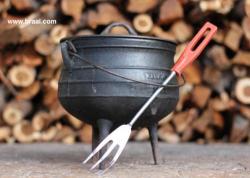
Here's a recipe: http://braai.com/recipes/how-to-make-putu-pap/
Resilience: practical action to improve things we can control.
3D+: developing language for postmodern spirituality.
Putu pap
Sounds delish! Sort of like grits, only grits aren't made with meal. I'd still be tempted to grease the pot with bacon grease and that crust at the bottom would be scrumptious!
w00t! Oh yes, Deja, that would be delicious :=)
Resilience: practical action to improve things we can control.
3D+: developing language for postmodern spirituality.
Chakalaka:
Hello Gerrit:
Do you have any good recipes for chakalaka to go with the pap?
Peace and love be with you, reader.
Hi Aardvark! I haven't had chakalaka in 25 years. I get my SA
goodies from an online store in Toronto - http://www.eatsummore.com. They import a crate of deliciousness as needed. I'm more of a chutney fan, it's not as spicy, and stock up on my favourite brand, Mrs. Ball's Chutney, from them.
But here's a recipe for chakalaka: http://www.lekker-sosatie.co.za/spicy-chakalaka-recipe/
Resilience: practical action to improve things we can control.
3D+: developing language for postmodern spirituality.
Let your lettuces go to seed
When the stalks have small dandelion puffs cut them and stick them top down in a paper bag. I do this all summer. It gives me seed for next year and usually enough to supply 50 of my friends or so.
My original seed came from an old woman in my hometown. It had a dozen or so varieties I have added more and finally pulled out more bags to divide it into cold tolerant, heat tolerant, butter head and leaf. Each year I try to add something new so it keeps evolving. There are no F1s in the lettuce world every variety is saveable.
Ty pswaterspirit! I should try that this season. No F1s!
Resilience: practical action to improve things we can control.
3D+: developing language for postmodern spirituality.
Gerrit, I've already linked this essay into the Library
In the future, may I suggest that essayists immediately on completion add a link in the library?
That goes for commenters with links in their comments.
The Library isn't about great writing skills, or long-winded descriptions. It's simply a card catalog of what happened here, and what was brought into the conversations (links).
Improve the Resilience Resource Library by adding your links.
Vote Smart - Just the Facts - 40,000 politicians by name or zipcode
As of right now AB...
only the 4 Resource Librarians have the ability to edit (add links) the Resource Library. I can add more editors, but it's not possible to add all c99p members, nor do I recommend that.
I saw that, aB. I'll try to remember. TY.
Resilience: practical action to improve things we can control.
3D+: developing language for postmodern spirituality.
I haven't decided on what
to grow yet. I tend to use plants that I will buy when I am ready. My garden is mostly herbs and flowers right now. But I was thinking of a planter full of spinach and perhaps some curly lettuce or a lettuce mix. I face due north and my patio remains very cool until at least late June so tomatoes take forever to grow...
I will also be working with some kids on THEIR veggie gardens at the community center that my Church is involved with, and I have a friend who has a commercial organic tomato grow-op that is already producing some of the best tomatoes....She literally produces thousands of pounds each year. I cannot compete with that.
Please help the Resilience Resource Library grow by adding your links.
First Nations News
Morning Martha! Those two projects sound real cool. Heh, heh,
would you take some photos for us from them? I'd love to see more about both the youth garden plots and the organic tomato operation.
About the tomatoes: our garden faces south, but I want to learn how to grow cherry tomatoes indoors in the winter under lights. Lots of good advice here already :=)
Resilience: practical action to improve things we can control.
3D+: developing language for postmodern spirituality.
Whoah! Love the way your 'Group' is shaping up--with
the addition of new categories (links). Thank you, Group Admins, as well as JtC!
As a lifelong vegetarian, this essay really hits home.
Unfortunately, due to health considerations, we are no longer gardening--in spite of the fact that at one residence (in the city), we have several acres of some of the richest black soil on the earth (well, almost!), and practically all the neighbors have at least a small garden for just this reason.
We've thought about looking into the feasibility of using some of the acreage for Community Gardening. But, we've been advised to look into both local ordinances, as well as checking the terms of our homeowners and personal liability policies. (I hope some of our family business is settled by next year, so that we can consider this.)
We have never been sophisticated, or particularly knowledgeable gardeners--our gardening style was the 'by the seat of your pants' variety.
But, we had fun!
If I can find them, I'll try to post a couple of photos of veggies grown in Alaska. I never took pictures of our own gardens there; but, we did snap a handful of photos at our borough Ag Fairs. Of course, the rate of growth there, was incredible.
Anyhoo, thanks again for all your work, Guys. Looks better every time I log in!
Mollie
elinkarlsson@WordPress
Visit Us At Save Our Street Dogs (SOSD)
"I think dogs are the most amazing creatures; they give unconditional love. For me they are the role model for being alive."
----Gilda Radner, Comedienne
Everyone thinks they have the best dog, and none of them are wrong.
Morning Mollie! Ty for this and I'd love to see the Alaskan
photos. You raise some important points.
Your situation is sadly so very common across North America: local municipalities - under pressure from rich property owners and box store franchises - make it very hard for home owners, renters, and neighbours to grow their own food. These types of regulations create a web of food denial so as to enslave their citizens to the corporate franchise stores. I think we (the royal we, I suppose :=) should work on some posts about how folks have beaten this kind of enslavement. Lots of success stories abound; our c99 members should hear about them.
For some folks who cannot garden, it could be worthwhile to buy food shares in a local CSA farm. These are Community Supported Agricultural farms,, where urban folks buy up-front, in the spring, a weekly food supply of fruits and veggies, and anything else of interest. Here's a link.
http://www.localharvest.org/csa/
Which reminds me: I should write a post about friends of ours and their CSA farm :=)
TY Mollie; enjoy your day my friend,
Resilience: practical action to improve things we can control.
3D+: developing language for postmodern spirituality.
Arugula is the best! It's spicy and is great in sandwiches
Birds love it too, so watch out for them. Sparrows come on my balcony to steal it. I grow a miniature rose beside it to deter them.
I get my seeds from West Coast Seeds, local, organic and fresh. I'm growing some dill to have with new potatoes. I always have too much dill so I put it on a wet paper towel on the table in our lobby and it is gone in minutes. I do that will any extra herbs I have.
Thank you for all this helpful info. How do I join this group?
I am busy these days watching MLB baseball online, painting a big painting, having a high school friend from the East visit me, etc. So I can't contribute much for the next few weeks but I will be reading Resilience.
To thine own self be true.
Morning Marilyn :=) I also buy seeds from West coast Seeds:
https://www.westcoastseeds.com/
We're delighted you're here; no need to "join." I'm not interested in running a club (like at top :=) We've created a space where friends can gather and discuss practical resilience stuff. Jump in where ever and whenever :=) This does remind me, I should add this info to our welcome page. Thanks, enjoy your day my friend,
Resilience: practical action to improve things we can control.
3D+: developing language for postmodern spirituality.
Lol dollar store gardens.
I love seeds of change and Rareseeds website. But it is really easy to buy greens seeds at the dollar store, four packs for a dollar. Most are heirloom open pollinated. Scatter mesclun seeds on the surface of a big pot outside and you are in business for months. Love arugula and Swiss chard and lacimato kale. Chives, parsley, sage, rosemary, basils, thymes, all thrive in pots, and you can get all these, four for ten bucks, at Home Depot. My local nursery, Calloways, is selling Chef Jeff veggies half off, so you can plant tomato and pepper plants for a buck and a half each (if seeds aren't your thing.)
You can be an urban gardener. There is even a website for the urban garden, more for guerrilla gardening.
Wow, Miss SPED, heirloom seed at Dollar Stores.
The price of good seed is important. Watching the total seed order amount jump up is eye-watering. I'd love to learn more about inexpensive sources of seed. TY for all this and for encouraging urban farmers. You show folks how easy it could be. Enjoy your day,
Which bring me to...seed saving :=)
We now regularly save the bigger seeds - mainly the big winter veggies. (And race the birds for the sunflower seeds) But we need to improve our skills at saving small seed. Folks, if you have seed saving advice, please jump in, eh.
We do worry about buying seeds from box stores, because we think they're grown with agri-biz chemicals that could be harmful to the environment and our bodies. I try to buy organically-grown heirloom seeds online. From reputable farms and from seed sharing organizations. (Oh, I better write a post rahter than babble on :=) The safest practice is to find organic, heirloom seeds, grow the veggies, and save your own seed. Then our seeds start off being healthy and adapt over the seasons to our own garden soil and weather.
Resilience: practical action to improve things we can control.
3D+: developing language for postmodern spirituality.
parsley
I love the flat-leaf, Italian style parsley. When I am gardening, I eat this as a vegetable green, not just an herb or flavoring. I put huge quantities of this in a salad, for example. Goes great with apple-carrot-lemon juice. Yum!
The benefit to growing this for me is because it is deep-rooted, it does well in a drought. Mostly you can keep eating it through the summer and late into fall. Cover well to overwinter, and in early spring you'll get some more greens, until it flowers and then it's bitter.
Not too many salad greens do well here--on the Great Plains there is only about 17 to 18 minutes between too cold to plant and much too hot for lettuce. Spinach is good because it grows in the cold, if you can plant it early enough and then harvest it all before it turns hot. Chard withstands heat a little better but grasshoppers like it. Growing things under cover is too difficult for me because of the high winds. Really, I don't know why anybody lives here, LOL. It is a harsh climate with wild extremes.
Here, SF Bay Area, Italian Parsley reseeds and
can even become invasive, which is good if you like to use a lot of it. It also does well in shade and partial shade, which is a bonus.
That, in its essence, is fascism--ownership of government by an individual, by a group, or by any other controlling private power. -- Franklin D. Roosevelt --
Morning sillia, I hope you have a great day. Lovie likes her
parsley - in everything :=) Our oldest and the dog is on the parsley side of the family. My son, younger daughter, the cat, and I hold firm on the other side of the parsley divide! But seriously, you're right, it is a very useful plant and grows easily.
As for the high plains, yessss :=) Have you heard of underground greenhouses? I posted on that a while back: it should be in the essay chain. I bought the plans for one ($50) from a Nebraska farmer who sells peaches locally throughout the winter! Somewhere in the guts of my mac is info on an Edmonton urban farmer who also has some nifty tricks. I'll hunt for it. (Sorry, the ptsd scrambled my brain and my filing system looks like a robin's nest :=)
Resilience: practical action to improve things we can control.
3D+: developing language for postmodern spirituality.
Yes, I saw the greenhouse essay
and there was a link to a book on the subject that sounded good. All of that is a bit too much of a project for me now, but maybe someday.
Growers here put up hoop houses, which can be pretty sturdy once they're up and require less construction...of course they are 3-season, not really greenhouses, but I think would help.
Understandable, sillia. I want to make some cloches this season
just to learn more about how to use them. But time, yikes :=)
I wouldn't be able to do the greenhouse by myself anymore either. My back is kaput and I can't focus as well as I used to. We're real fortunate in that some of our kids are moving back home (on Thursday, yippee!!!) and they have the energy and the strong backs :=) My job will be to help plan and prepare, light duties, supervise, harrumph and cheer! Enjoy your day,
Resilience: practical action to improve things we can control.
3D+: developing language for postmodern spirituality.
Chard, sometimes kale or spinach or even mesculin.
In the East Bay, chard grows pretty much all year round and one just keeps harvesting leaves, making it a very good selection. We use it in soups, stews, red sauces, and on pizzas. Your spinach plants look very interesting, so I will be noting them down for experimenting.
That, in its essence, is fascism--ownership of government by an individual, by a group, or by any other controlling private power. -- Franklin D. Roosevelt --
Morning enhydra, I hope your day goes great. Good luck
with your garden this year; wow, chard grows year-round, wow. Yes, we're hoping to expand the spinach; get more iron and nutrient goodies into us. I hope these more heat-tolerant varieties work well in the hotter summers. Enjoy your day,
Resilience: practical action to improve things we can control.
3D+: developing language for postmodern spirituality.